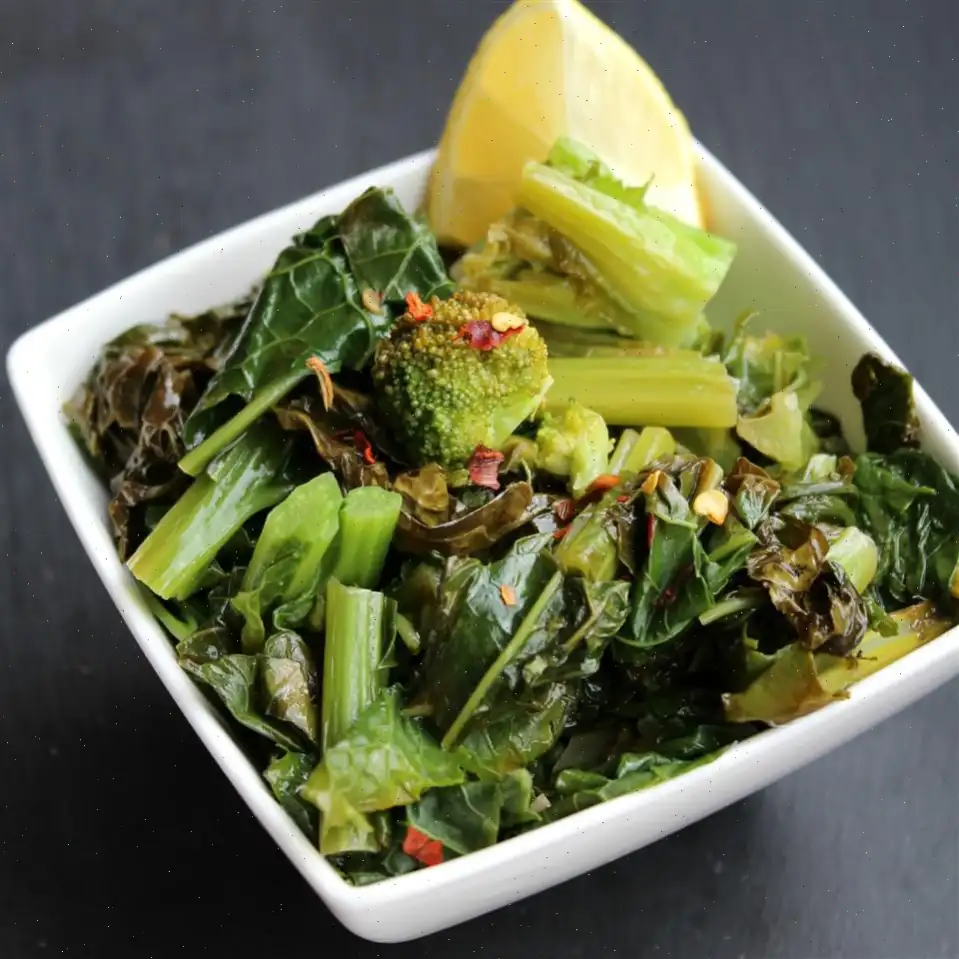
Bierocks (German Meat Turnovers) Recipe
Ingredients
This recipe was developed at its original yield. Ingredient amounts are automatically adjusted, but cooking times and steps remain unchanged. Note that not all recipes scale perfectly.
- 2 (1 pound) loaves frozen bread dough, thawed
- 1 pound ground beef
- 1 onion, chopped
- 1 clove garlic, crushed
- 1 teaspoons salt
- 1 teaspoons lemon pepper
- 1 small head cabbage, chopped
- 2 tablespoons Worcestershire sauce
- 2 teaspoons caraway seeds
- cup melted butter
Directions
Follow these simple steps to create a delicious and savory dish:
- Step 1: In a large skillet, saut the ground beef, chopped onion, and crushed garlic over medium-high heat. Add salt and lemon pepper to taste. Cook until the beef is browned and fully cooked.
- Step 2: Add the chopped cabbage, Worcestershire sauce, and caraway seeds to the skillet. Continue to cook until the cabbage wilts and becomes soft. Drain any excess liquid from the mixture.
- Step 3: Preheat your oven to 350F (175C).
- Step 4: On a lightly floured surface, roll each loaf of dough into a 12-inch circle.
- Step 5: Cut each circle into 6 wedges. Spoon the cabbage and beef filling evenly onto the center of each wedge.
- Step 6: Carefully fold up the three points of each wedge towards the center and pinch the edges to seal the dough securely around the filling.
- Step 7: Place the bierocks onto a lightly greased cookie sheet. For extra flavor and shine, brush the dough with melted butter or an egg wash (1 egg white mixed with 2 tablespoons of water).
- Step 8: Bake in the preheated oven for 30 minutes or until the bierocks are golden brown and cooked through.
- Step 9: Serve hot, or allow to cool and wrap for later. These can be frozen and reheated as needed.
Nutrition Facts (per serving)
| Calories | 371 |
|---|---|
| Total Fat | 16g |
| Saturated Fat | 7g |
| Cholesterol | 45mg |
| Sodium | 883mg |
| Total Carbohydrate | 39g |
| Dietary Fiber | 3g |
| Total Sugars | 4g |
| Protein | 15g |
| Vitamin C | 3mg |
| Calcium | 29mg |
| Iron | 4mg |
| Potassium | 178mg |
* Percent Daily Values are based on a 2,000 calorie diet. Your daily values may be higher or lower depending on your calorie needs.
** Nutrient information is not available for all ingredients. Amount is based on available nutrient data.
History and Origin
Bierocks, also known as German meat turnovers, are a popular dish with origins in Eastern Europe, particularly among the Volga Germans. These German-speaking Russians immigrated to the United States in the 18th and 19th centuries, bringing with them traditional recipes. The name "Bierock" is derived from the Russian word "pirozhki," which refers to small, stuffed pastries. These hearty pastries were originally made with dough filled with a mixture of beef, cabbage, and onionsa staple combination in the Volga region. Over time, Bierocks found their way into American cuisine, particularly in the Midwest, where they are served at family gatherings and festivals, including Oktoberfest celebrations. They are also referred to as "Runzas" in Nebraska, where they have become a beloved regional treat.
Regional Variations
Bierocks are especially popular in the Midwestern United States, particularly in Kansas and Nebraska, where German immigrants settled. In Nebraska, they are often called "Runzas," a name that is trademarked by the popular restaurant chain that serves them. While the traditional filling is beef, cabbage, and onions, variations of the recipe abound. Some versions include cheese, such as Swiss or cheddar, while others may feature ground pork or sausage mixed with the beef. Additionally, the dough may vary from homemade bread dough to pre-packaged biscuit or crescent roll dough, depending on the time and effort available. While they are typically baked, some versions are also fried for a crispier texture.
Distinguishing Features
While Bierocks share similarities with other stuffed pastries, such as empanadas or pasties, they stand out due to their specific filling combination of ground beef, cabbage, and onions. The use of caraway seeds in the filling is a characteristic feature that sets Bierocks apart from many other meat turnovers, adding a subtle, earthy flavor. Another distinguishing factor is the dough, which is often light and soft, providing a perfect balance to the hearty filling. In contrast, other stuffed pastries, like empanadas, tend to have a flakier crust, and pasties often feature a thicker, more robust dough.
Where to Serve Bierocks
Bierocks are a versatile dish that can be served in various settings. They are often found at Oktoberfest celebrations, particularly in the United States, where they are enjoyed as a snack or part of a larger meal. They are also popular for casual family dinners, tailgates, and picnics due to their portability and satisfying nature. Additionally, Bierocks are frequently served at holiday gatherings and potlucks, where their hearty filling makes them a crowd-pleasing option. In Nebraska, the "Runza" chain has made Bierocks a fast-food staple, available for quick lunches or dinners. They can also be easily frozen and reheated, making them an excellent choice for meal prep or a quick "grab-and-go" option.
Fun Facts
- Bierocks are believed to have been brought to America by Russian-German immigrants who settled in Kansas and Nebraska.
- The name "Runza" is a trademarked name for the Nebraska version of Bierocks, and the chain of restaurants has been serving them since 1949.
- While the traditional filling is a combination of beef, cabbage, and onions, there are countless variations that include ingredients like cheese, mushrooms, or even sauerkraut.
- In some areas, Bierocks are referred to as "Korean Bierocks" because of their popularity in Korean-owned fast-food restaurants, who added their twist on the recipe with unique fillings.
- Although Bierocks are often associated with Oktoberfest, they are not commonly found in Germany, and their popularity outside of the United States is limited.
FAQ about Bierocks (German Meat Turnovers) Recipe
Comments
Heather Rivera
09/07/2024 11:04:17 AM
I was pleasantly surprised by the idea of using prepared biscuit dough for this recipe. I followed the filling instructions, but accidentally forgot to add salt (which turned out fine). I had both jumbo buttermilk biscuits and jumbo flaky biscuits on hand, so I decided to use both cans since there was a lot of filling. I rolled out the dough into small rounds, about six inches each, filled them, folded and crimped them, and baked them in the oven for around 15 minutes until they were golden brown on top. Working with the biscuit dough was incredibly easy and the cooking time was cut in half! Both types of biscuit dough were tasty, but the preference seemed to lean towards the flaky ones.
Christine Collins
10/01/2024 12:19:31 PM
I decided to make this recipe using only sauerkraut without any cabbage. I used a Bavarian-style sauerkraut which has a slightly sweet taste, so I incorporated about 2 tablespoons of stoneground mustard into the filling. I followed the rest of the recipe as instructed. We plan to enjoy this dish when my guests arrive. The filling turned out really delicious - I couldn't resist doing a taste test before serving this new recipe to my company!
Joshua Campbell
11/28/2024 08:07:19 AM
I decided to swap cabbage with canned sauerkraut and used a grand-style biscuit dough that I rolled out into circles. The dough didn't hold together well when I shaped it into buns, but it turned out fine after a bit of extra cooking time. I recommend using 2 cans of biscuit dough for the filling as each circle can only hold about 3-4 tablespoons. The outcome was delicious. I paired these with "Jeanette's red cabbage" from the same site, which was also fantastic. Overall, this recipe was simple to make and yielded tasty results.
Catherine Nelson
11/20/2023 01:54:38 PM
The meat appeared slightly dry, perhaps due to the draining of the fluids. I added a dash of Worcestershire sauce afterwards, which enhanced the flavor.
Kenneth Clark
08/13/2024 11:16:49 AM
Great recipe! I used crescent rolls instead and ended up with plenty of filling.








